KOFI AKPABLI WRITES, ‘PANAFEST IN THE YEAR OF RETURN’
Powered by a development agenda, and as old as Ghana’s democratic dispensation, PANAFEST is undoubtedly a key stakeholder in the “Year of Return“. The festival emerged on the Ghanaian scene in the early 1990s with a message, which has remained relevant- celebrating the essence of black people and re-uniting Africans with those in the diaspora.

Today, not only has the event demonstrated staying power, it has remained the reference point for African Diasporans returning home to the motherland. More than that, PANAFEST has sustained diverse platforms as well as partnerships to confront the rather difficult conversations around Africa and the Trans-Atlantic Slave Trade.
Marcus Mosiah Garvey is famed for the idea that all people of African descent should move back to the continent to partake in the development process. Since then, successive Heads of State in Ghana have initiated actions and policies to attract Diasporans back to Ghana. In his independence speech, Osagyefo Kwame Nkrumah envisioned an African liberation anchored on the idea of people of African descent coming back. Ghana, as a result, is the home and resting place of several Pan Africanists, most famous among whom are W.E.B. DuBois and George Padmore.
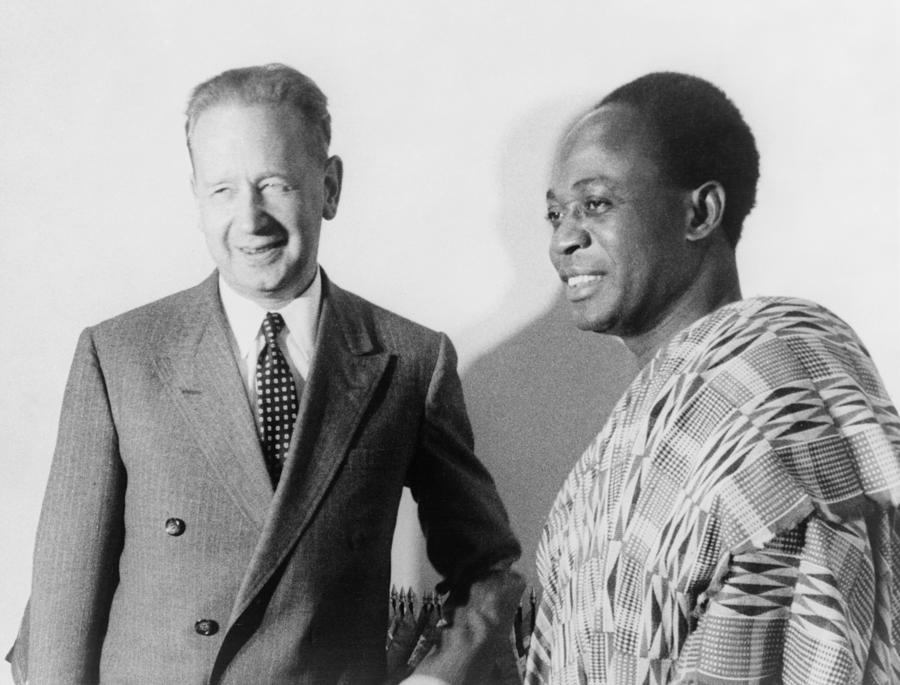
Another example is the Immigration Act of 2000 under the Rawlings regime which provides for a right of abode for any “Person of African descent in the Diaspora” to travel to and from the country without hindrance.
By declaring 2019 as the “Year of Return,’’ President Akufo-Addo seeks to reinforce Ghana’s credential as the hub of Pan Africanism. Coincidentally, the ‘’Year of Return‘’ is a celebratory year for the biennial PANAFEST event. This article broadens the perspective to prove that the “Year of Return’’ and PANAFEST itself are reverberations, set to roll by precursors within the local as well as a global arena.
Take local literature. In the 1960s when Ama Ata Aidoo wrote the Dilemma of a Ghost, a play that was first put up at Commonwealth Hall, she was a proponent in the movement that was generating debate on the place of African Americans in Ghanaian society.
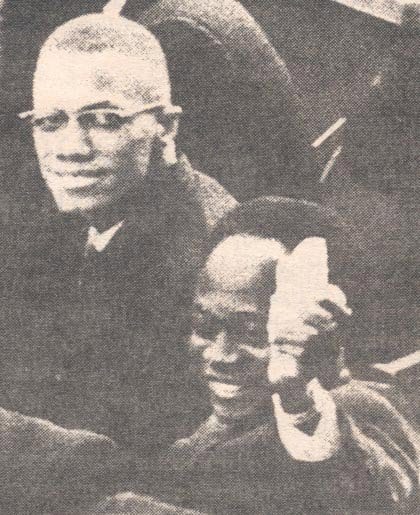
When in 2013, the United Nations Declared 2015-2024 as the ‘’International Decade for People of African Descent,’’ many communities in Africa and within its Diaspora might have yawned it away as another officious sloganeering. To cap it neatly, the theme for the ten-year celebration is “People of African descent: recognition, justice and development.” Overambitious and nice-sounding, huh?
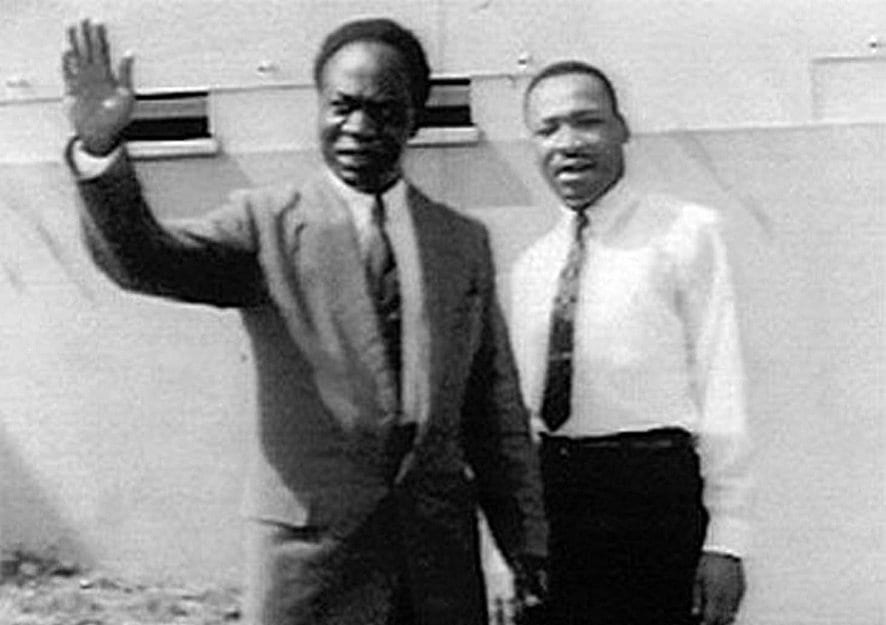
This skepticism may not be misplaced. The history and politics of the Black man’s story have become a bit too complex for one stroke of bureaucratic cosmetics to cause a difference. As America, for example, has demonstrated, racism is not stopping anytime soon and the light of black power is still not appearing at the other end of the tunnel. The foregoing and other developments notwithstanding, events seem to be coming together to generate positive discourse since the United Nations declaration.
Incidentally, Ghana’s ‘’Year of Return’’ happens midstream of this UN decade. The question is how does a forum such as PANAFEST engage? Originally dubbed the Pan African Theatre Historical Festival, the concept was birthed in the early 1990s into a world grappling with its own new and emerging status; a world, which could barely catch up on the series of epochal developments that were re-defining it.
On a February day in 1990, Mandela had walked out of jail after 27 politically charged years. A couple of months later, the Iraq War had broken with Allied Forces reminiscent of Allies in the Second World War. The prayer was that the adventure would be quick and over with. Meanwhile, a certain Charles Taylor was leading a horde of hinterland rebels on their march towards Liberia’s seat of Government.
For such a turbulent period, perhaps it was for comic relief that, Cameroun proved at the FIFA World Cup, that Africa could sting and, courtesy Roger Milla, could dance to boot. Christmas the following year gave us the shocking gift of a USSR empire crumbling to impose the uncertainties of uni-polarism after nearly five decades of a Cold War. One could surmise that the 1989 fall of the Berlin Wall had foreshadowed it. And, oh, by this time CNN had appeared on our local screen, dazzling us as the first 24-hour news channel in the world.
Also Read: CNN Lists Ghana as place to be in 2019
On the local front, Ghana was inching towards a return to democratic constitutional governance. By 1991, the nation was at the cusp of ending a decade long military rule. Around the same time, a brand new National Theatre had been built courtesy, the Chinese (Now we know that it was not quite ‘surprise, surprise’).
Well, that was the era PANAFEST chose to burst onto the scene. We were soon to learn that the concept was long coming from the visions and propositions of Efua T. Sutherland, dramatist cum Pan-Africanist whose daughter Prof. Esi Sutherland-Addy is today working with others to steer the affairs of PANAFEST.
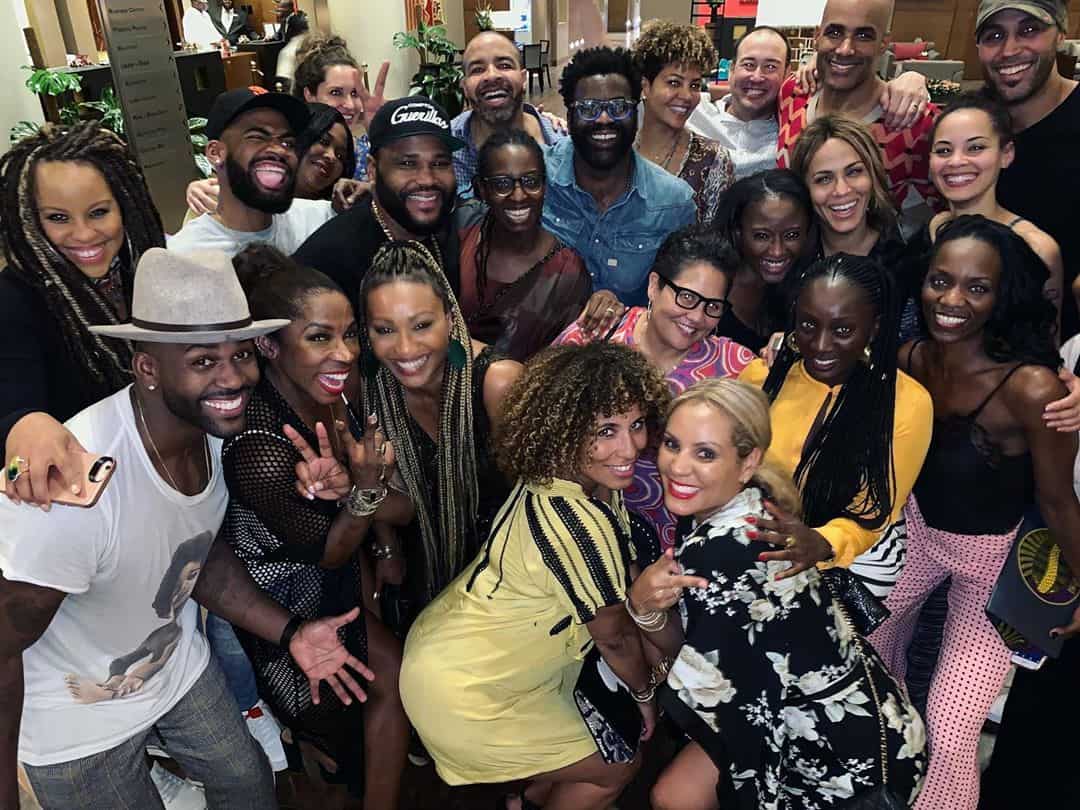
The name of the new festival sounded exotic, sexy even. There was a national playwriting contest on the theme of the Slave Trade. Under the Chairmanship of Ben Abdallah’s National Commission on Culture, drama competition included a students’ category.
That first PANAFEST was held in Elmina and Cape Coast. The winning plays were put up during the events and later followed up with run offs in Accra. The festival announced itself as essentially a cultural event dedicated to the enhancement of the ideals of Pan Africanism and the development of the African continent. Organized biennially, PANAFEST aims to establish the truth about the history of Africa and the experiences of African peoples using the vehicle of African arts and culture.
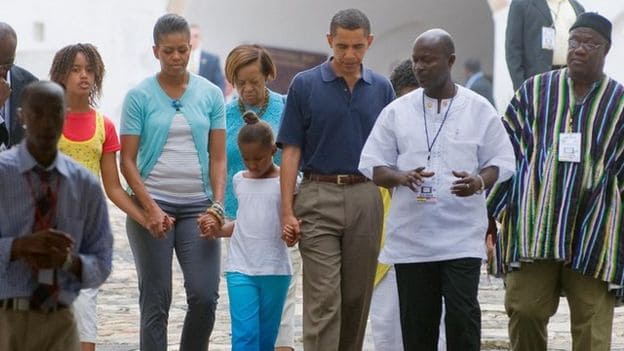
It provides a forum to promote unity between Africans on the continent and in the diaspora and to affirm the common heritage of African people the world over by defining and promoting the continent’s contribution to world civilization.
PANAFEST has since attracted a diverse assembly of people ranging from political leaders, eminent personalities, intellectuals, business concerns, investors and tourists. Central to the celebration are major international performing and visual artistes. Needless to say that popular African descended stars such as Isaac Hayes and Rita Marley not only came over to perform, they eventually made Ghana their home. In 1998 PANAFEST took on an additional ceremony, Emancipation Day making Ghana the first African nation to commemorate an African diaspora event that marks the abolition of slavery.
It is critical to note that in the past, PANAFEST has not always received adequate government support. Still, the event had stayed on course. In some of the celebratory years, the venues had gone beyond the Elmina-Cape Coast-Assin Manso triangle to include a few northern towns on the slave trade route. In 2001 for instance, an enthusiastic group of some thirty African Americans visited Paga. Led by Prof. James Small and Dr. Jeffries they visited the Nania Slave Camp.
Fresh from university and doing national service with the Ghana Tourism Authority in Bolgatanga, this writer was the liaison officer for that visit. The Paga Pio and his people honoured the home-comers with a memorable durbar. In the evening, a reception was held in the chief’s courtyard. Here, and to the amazement of onlookers, the African Americans lost all inhibitions and took over the nagla dance from the indigenous performers. They danced and danced and danced.
At the time it happened, the above episode did not capture the lens of the national media but it did capture the spirit of PANAFEST. Thankfully, this year’s PANAFEST features another homecoming expedition to the North. Outlining the focus areas of activities at the recent launch of the festival in Cape Coast it’s Executive Director Rabbi Kohain Halevi, charged Ghanaians to create a stimulating environment for the expected arrivals. He considered the relevance of the event as transcending the year period into an opportunity to examine the disruptions of African history.
In this year of return, one expects PANAFEST to lead in critical national conversations. Ghanaian society tends rather not to talk about issues related to slavery. Is it a good idea to start? Could we discuss reparations? How should we engage the castles of Elmina, Cape Coast and Fort Prinzeinstein, for instance? And why should visiting people of African descent at these Sites of Memory pay the same gate fee as the blue-eyed Caucasian from Europe?
Finally, there is the question of the youth. At both the launch of the Year of Return at Dubois Center as well as the launch of PANAFEST in Cape Coast young people stepped forward to express the same concern- ‘’what doors are our leaders opening for us?’’ One would, therefore, expect a vibrant engaging of this critical community of our human capital. To re-echo a statement by Prof. Esi Sutherland at the recent Cape Coast launch, ‘’PANAFEST is not only about the past. It is also about the future.’’
By: Kofi Akpabli
President Akufo Addo commissions Kintampo waterfalls canopy walkway
The newly constructed canopy walkway at Kintampo Waterfalls was commissioned by the president of the Republic of Ghana, H.E Nana Addo Dankwa Akufo–Addo on Monday, 15th April 2019 at Kintampo.
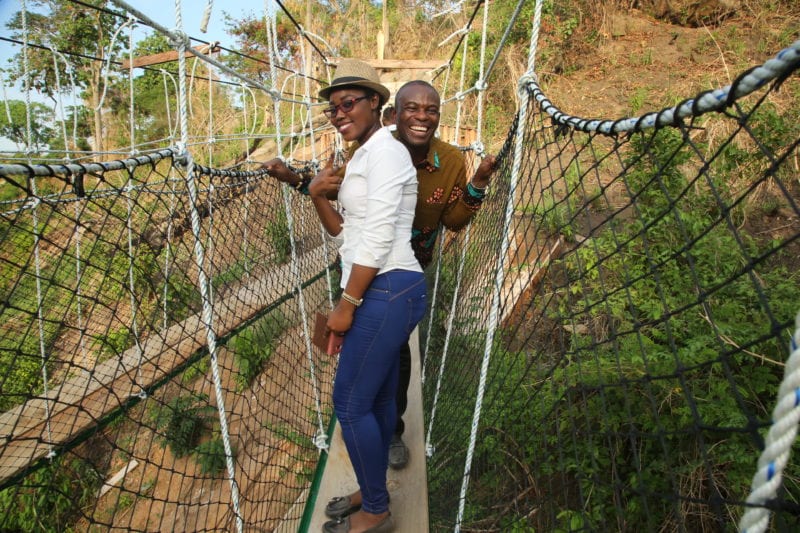
The canopy walkway was constructed through a collaborative effort of the Ghana Tourism Authority and a private developer, Bunso Arboretum Canopy Walkway LTD, with active support from the Traditional Authorities and the Municipal Assembly.
The Kintampo Waterfalls canopy walkway is part of ongoing projects to enhance the visitor experience at the Waterfalls. This adds to the increasing number of canopy walkways in Ghana, which include; the Kakum National Park, Legon Botanical Garden canopy walkway, Bonsu Arboretum canopy walkway. The Ghana Tourism Authority is working on adding a Zipline to also enhance the visitor experience.
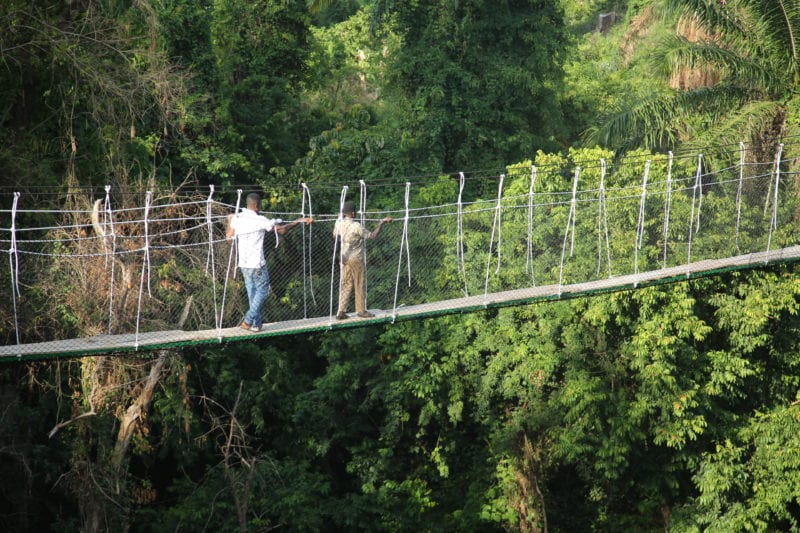
The walkway is constructed over a valley spanning 90 meters and 80 meters at two locations. It is made up of two cables which serve as the tread way with 3 high tensioned tendons which form the structural base for the platform. The platform is made up of angle bars braced together with a wooden plate forming the walkway area.
The structural calculation and design of the canopy walkway show that the bridge can accommodate a maximum load of twenty people, each weighing an average of 100kg.
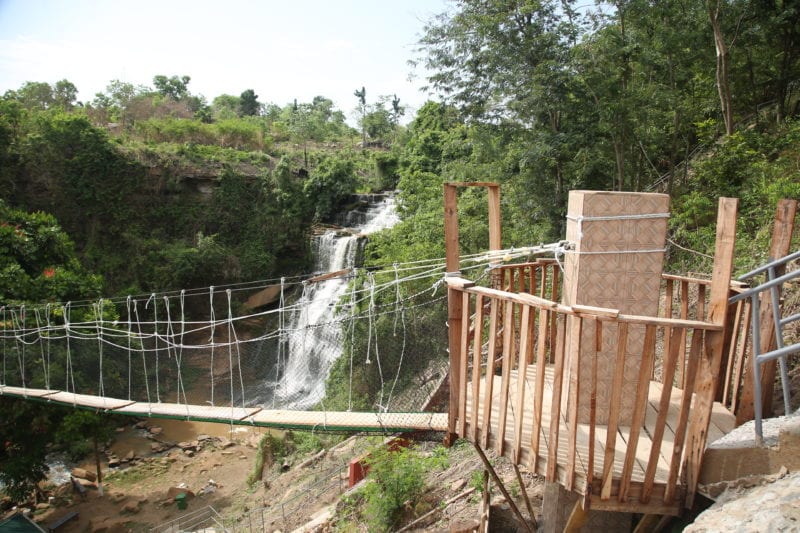
Background
The new Kintampo Waterfalls site started its operation officially on 19th November 2017 after its closure to the general public after the unfortunate incident, which claimed 18 lives. The Ghana Tourism Authority with support from the Municipal Assembly and the Traditional Authority embarked on the redevelopment of the site to help prevent the similar incident and position Kintampo Waterfalls as a leading tourist attraction in Ghana.
Ghana pitches for share of Chinese market at COTTM 2019 Exhibition
The Ghana Tourism Authority as part of its mandate to market Ghana to attract tourist has made a strong representation at this year’s China Outbound Travel & Tourism Market (COTTM) which China’s leading outbound travel exhibition.
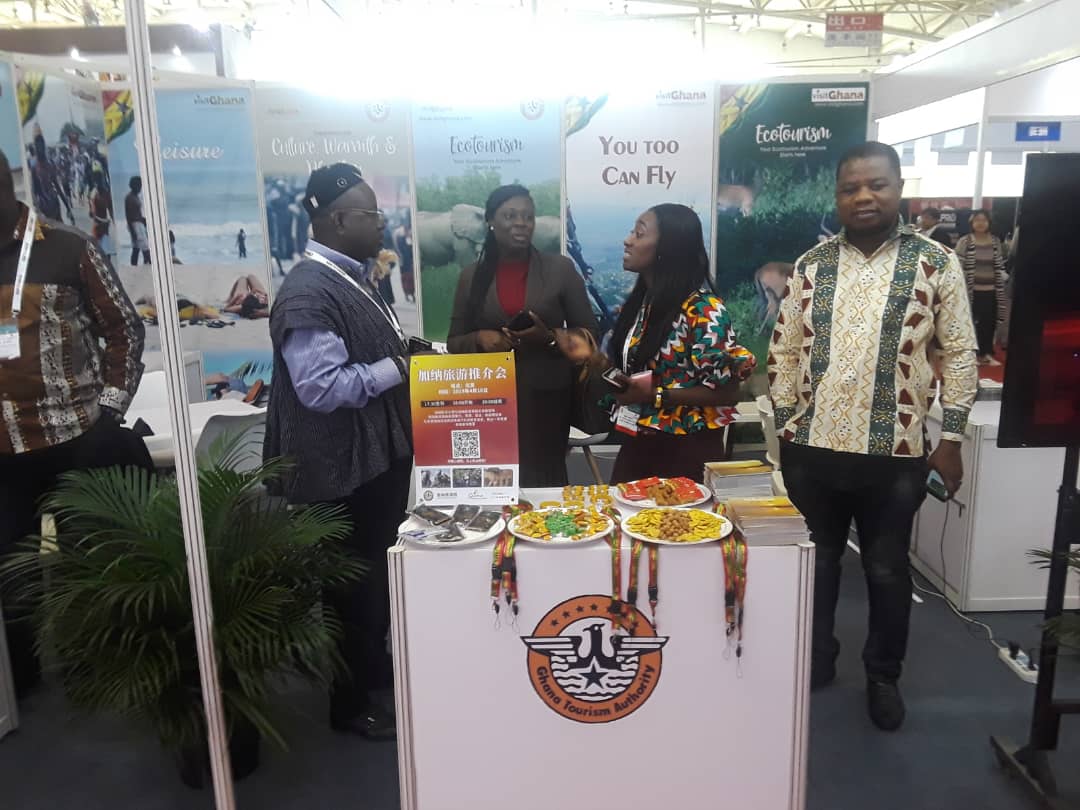
The Ghana delegation was led by the Chief Executive of the Ghana Tourism Authority, Mr Akwasi Agyeman. Ghana showcased her ecotourism, culture, adventure and warmth at the exhibition.
The 15th edition of COTTM is taking place from April 15 to 17 at the New Hall National Agricultural Exhibition Centre in Beijing. COTTM is widely recognized as the industry’s most important platform and remains the only business-to-business event that focuses solely on the growing outbound tourism market in China.
Year of Return: Jamaica – Ghana Reggae Festival thrills patrons
It was a night of good reggae music and wonderful performances at the Independence Square, Accra last Saturday at #JaGhafes2019 which is part of programmes marking the #YearofReturn #Ghana2019 celebrations. Organised by Edge of the World Production (EOTWP), Jamaica – Ghana Reggae Festival, #JaGhaFest is an event which aims to embrace and unify the people of Ghana & Jamaica through culture and music.
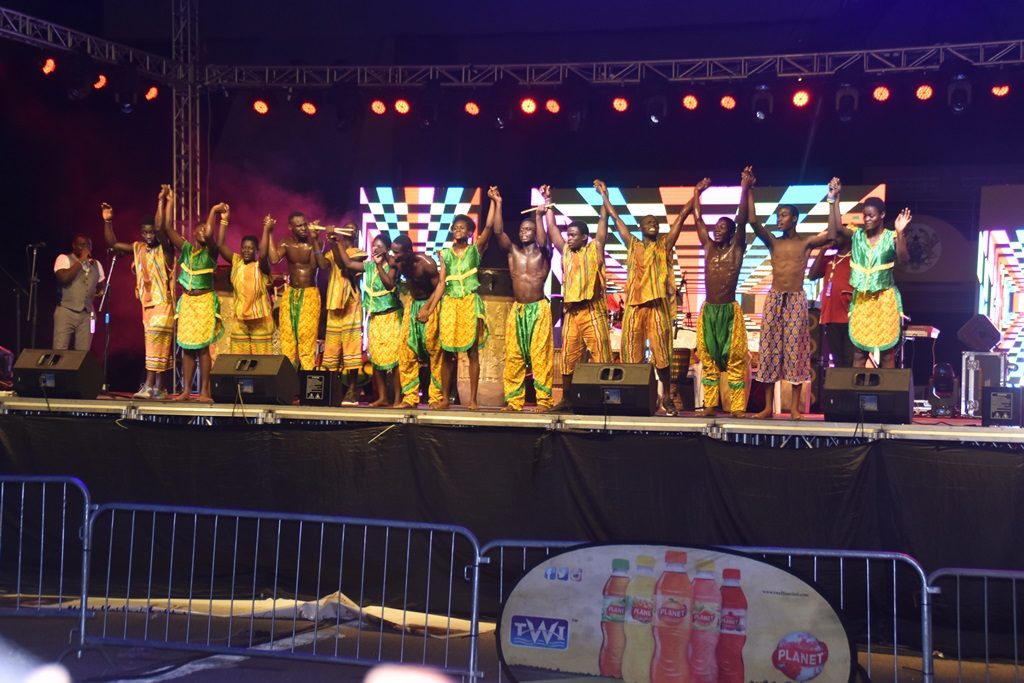
The vision is to bring the African Diaspora back home to the Motherland and to create a festival that unites the strong African culture with our brothers and sisters abroad and to spread this message through Reggae.
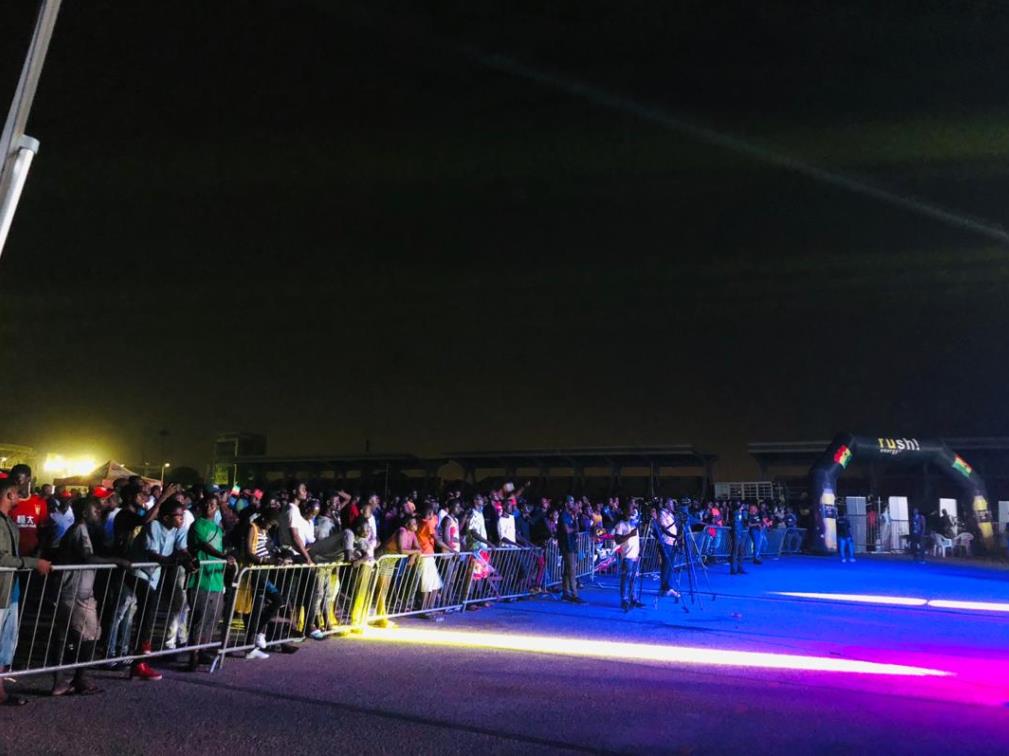
JaGhaFest is all music and dance and the maiden edition took place at the Black Star Square last Saturday, April 13 with artists from Ghana and Jamaica performing.
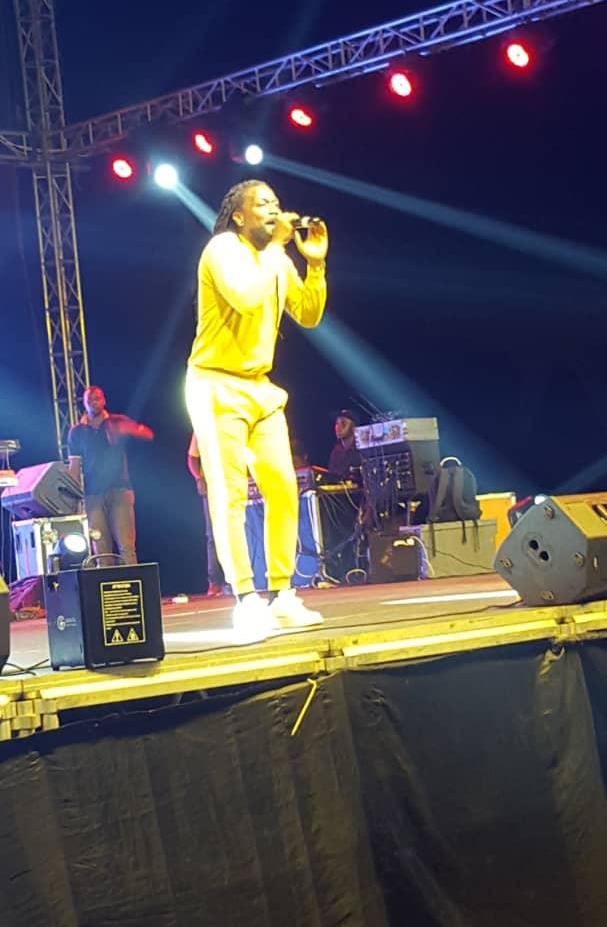
Ghana’s Reggae-Dancehall top Act, Samini thrilled fans at the event
Click here to view more pictures from the JaGhaFest 2019
Source: VoyagesAfriq
WOJO team dance their way to victory at Destination Legon 2019
A group of final year business students of the University of Ghana Business School (UGBS) who have begun using the power of technology to market and promote Ghanaian dance as a tourism product have emerged champions of this year’s Destination Legon Tourism Marketing Exhibition, simply known as Destination Legon.
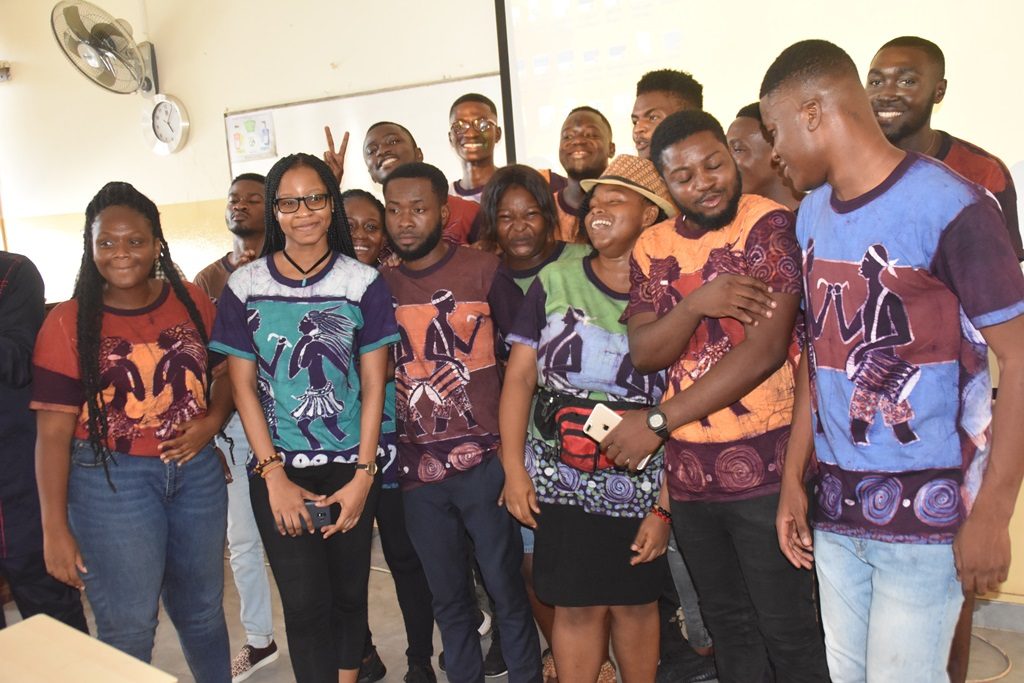
Wojo shrugged off competition from 14 other groups in a battle of wits and ideas on how their respective destinations and attractions could be packaged, promoted and sold to prospective buyers and tourists. The group, Wojo, which translates as “let’s dance” in the Ga language, made a presentation which highlights the use of Artificial Intelligence (AI), Virtual Reality (VR) and related tools to bring the various Ghanaian dance experiences to consumers as a key tourism component. The group has also created a Gaming App that allows users to among other things, learn ways of improving and keep clean sanitation.
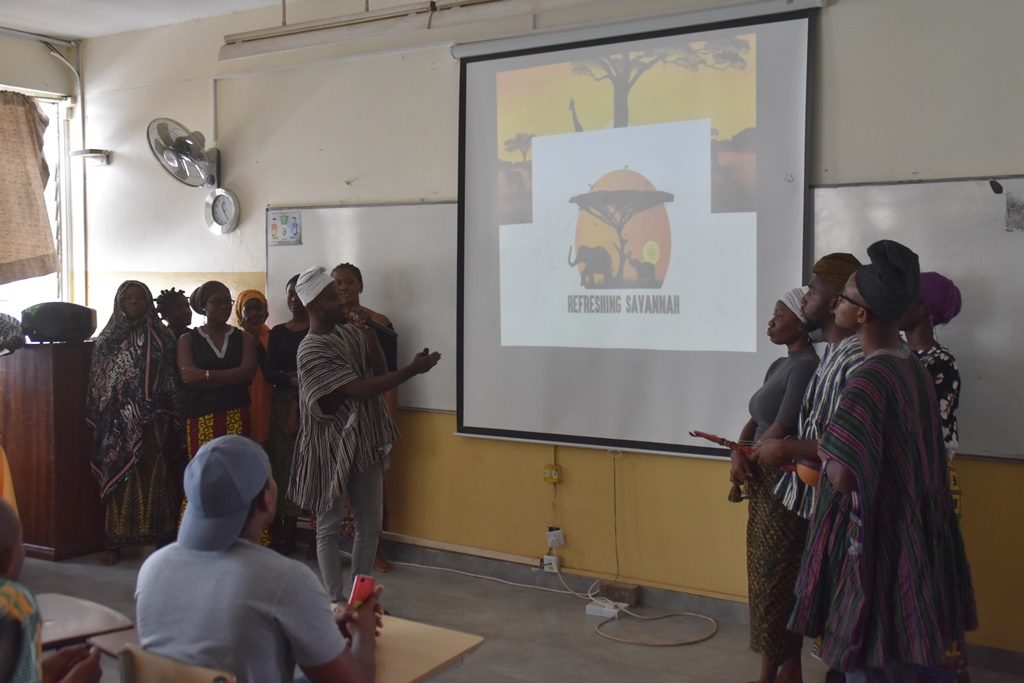
Destination Legon is the practice part of the course, Tourism Marketing that is taught at UGBS with the idea that students are equipped with skills that they can use to market destinations just like as products and services are marketed. Teams of level 400, MBA and MPhil students offering Tourism Marketing at the Department of Marketing and Entrepreneurship are given the opportunity to choose various destinations to design and prepare alluring messages to market Ghana’s tourist attractions and destinations to potential tourists.
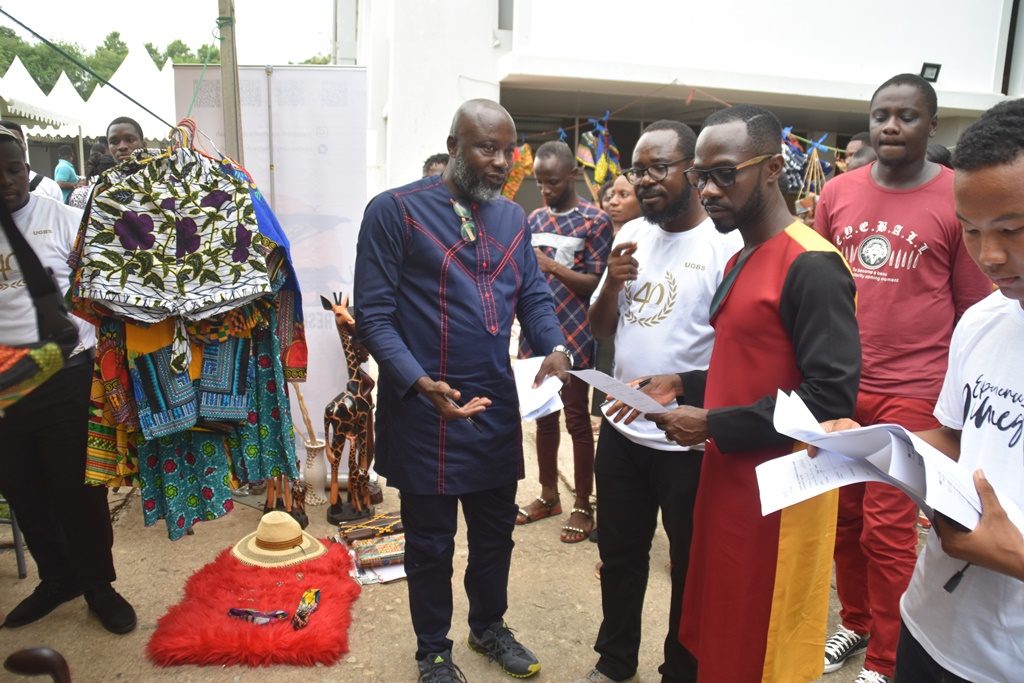
Students then make a presentation of their marketing and promotion plans to a jury of experts drawn from academia and industry who determine the winner. There was also an exhibition of products from the destinations by the student teams.
This year’s, which is the sixth edition, was held on the theme, “Year of Return: Enhancing the digital space for tourism growth” and the students were expected to deploy technological tools to enhance and market their tourism products.
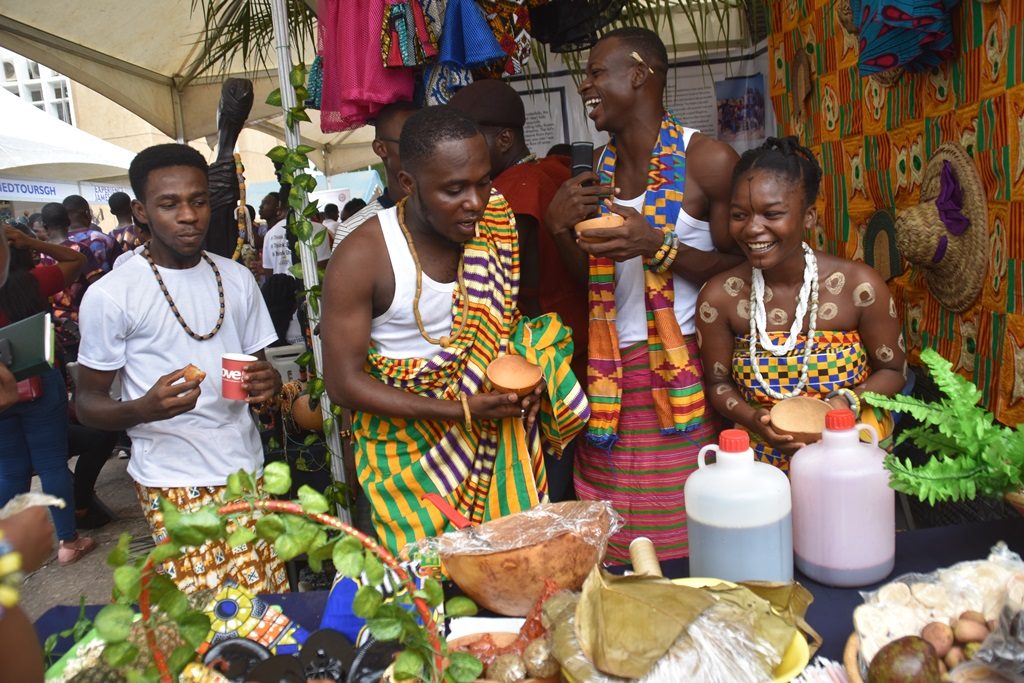
Speaking to www.voyagesafriq.com on this year’s event, a lecturer at UGBS, and Co-Convener of Destination Legon, Dr Kobby Mensah said once again, students had demonstrated a sense of creativity and innovation in creating new tourism products and services. “Obviously the presentations have been amazing, the students have done incredibly well and I think they have diverse ideas from the previous editions”.
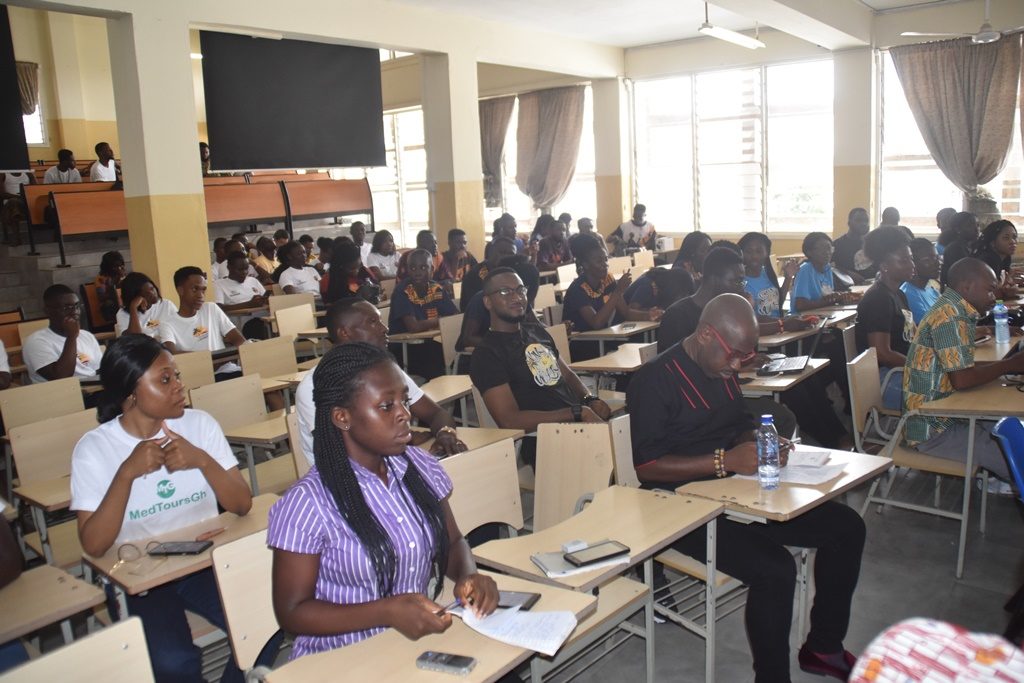
While commending the support of the Ghana Tourism Authority for their support over the years, he appealed for more stakeholder support and interest. “We need a formal agreement where we can actually say that right after the group presentations, the best ideas are actually synthesized and used in the tourism space and GTA are all stakeholders involved. So I’m still calling on stakeholders to come up and support this idea and tap into the talents of these young ones and I’m sure we can improve the tourism of this country,” Dr. Mensah said.

Jury for Destination Legon 2019 comprised, Agbeko Lotsu, a Marketing Consultant, Abeiku Santana, ace Broadcaster and CEO, Kaya Tours, Okyeame Kwame, Musician and Tourism Ambassador, Rosaline Kyere-Nartey, Hospitality Specialist, and Ian Wardi, Tourism Ambassador.
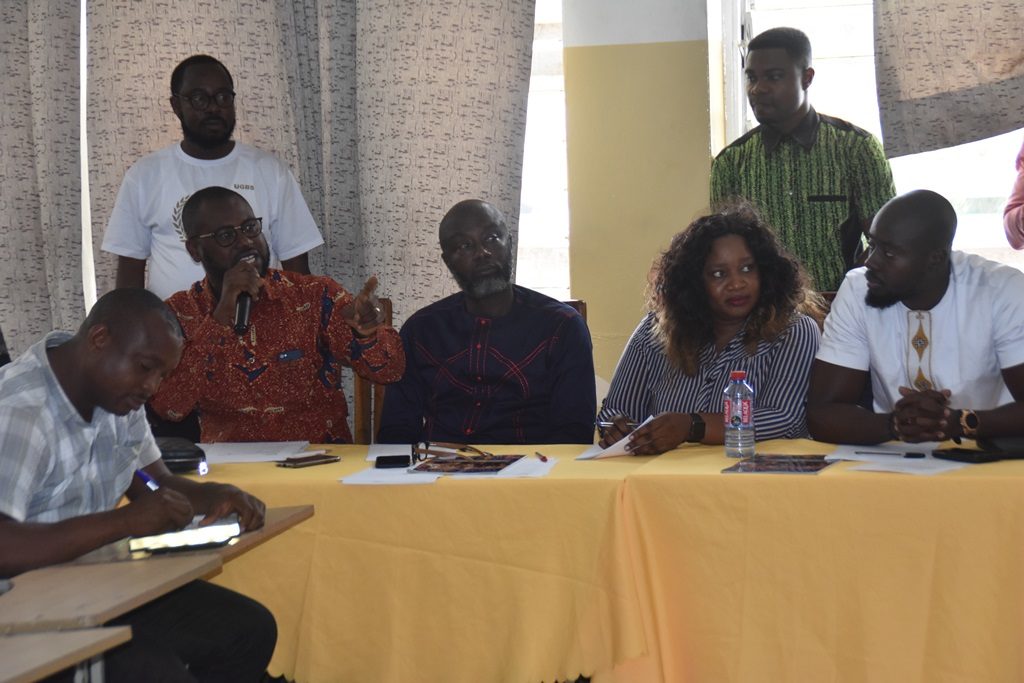
Click here to view more pictures from Destination Legon 2019.
Story by: Samuel Obeng Appah – VoyagesAfriq
France24 Report on Year Of Return: Hundreds of African-Americans resettle in Ghana
France24 has in a report looked at how Ghana is increasingly becoming home to hundreds of African-Americans especially in light of the on-going ‘Year of Return, Ghana 2019’ campaign. The report looks at the lives of some African-Americans who have settled in Ghans over the years. Read and watch the report below.
Ghana was one of the main West African departure points for the transatlantic slave trade. Today, the government has launched a campaign to reach out to the descendants of those Africans who were forcibly removed from their homelands. It has dubbed 2019 the “year of return“. Several hundred people have already put down roots in Ghana, many of them African-Americans. Our colleagues from France 2 report, with FRANCE 24‘s James Vasina.
This article comes on the heels of other reviews published earlier in the year.
Watch the programme/video report prepared by Patrick Lovett and James Vasina below.
Related Articles:
HomeToGo – https://visitghana.com/ghana-listed-in-top-10-trending-summer-destinations-for-2019/
Year Of Return: “Come with an open mind and heart” – Mona Boyd invites Diasporans
Year of Return: African Diaspora in Ghana for Back2Africa Festival
CNN: CNN Travel lists Ghana as place to visit in 2019
About Year of return, Ghana 2019
The “Year of Return, Ghana 2019” is a major landmark spiritual and birth-right journey inviting the Global African family, home and abroad, to mark 400 years of the arrival of the first enslaved Africans in Jamestown, Virginia. The arrival of enslaved Africans marked a sordid and sad period, when our kith and kin were forcefully taken away from Africa into years of deprivation, humiliation and torture. While August 2019 marks 400 years since enslaved Africans arrived in the United States, “The Year of Return, Ghana 2019” celebrates the cumulative resilience of all the victims of the Trans Atlantic slave Trade who were scattered and displaced through the world in North America, South America, the Caribbean, Europe and Asia.
One of the main goals of the Year of Return campaign is to position Ghana as a key travel destination for African Americans and the African Diaspora. In 2019, the events planned throughout the year will serve as a launch pad for a consistent boost in tourism for Ghana in the near and distant years. Beyond tourism, this initiative supports one of the President’s key developmental agendas in Ghana Beyond Aid. We know that tourism can be a leading indicator to business and investment.
We are focused on ensuring that our brothers and sisters have a safe, pleasant and wonderful journey home so they will want to come back, get involved, see the opportunity that exists in Ghana for us to work together and begin to rebuild what has been stolen and lost over the past 400 years.
Board inaugurated to manage Bunso Arboretum tourism
The Ghana Tourism Authority together with the Akyem Abuakwa Traditional Council has inaugurated a five-member management board to see to the affairs of the Bunso Arboretum tourism site located at Bunso in the Eastern Region.
They are expected to elevate the tourist site to a world-class eco-tourism destination.
The members are Mr Ekow Sampson, Deputy CEO of the Ghana Tourism Authority, Mr Daniel Ofori Attah, a representative of the Akyem Abuakwa Traditional Council, Dr Seth Appiah Kubi, Executive Director of A-Rocha Ghana, Kwame Boateng, a board member of Ghana Tourism Authority, Mr Albert Mensah of DCCL, the current managers of Bunso Arboretum.
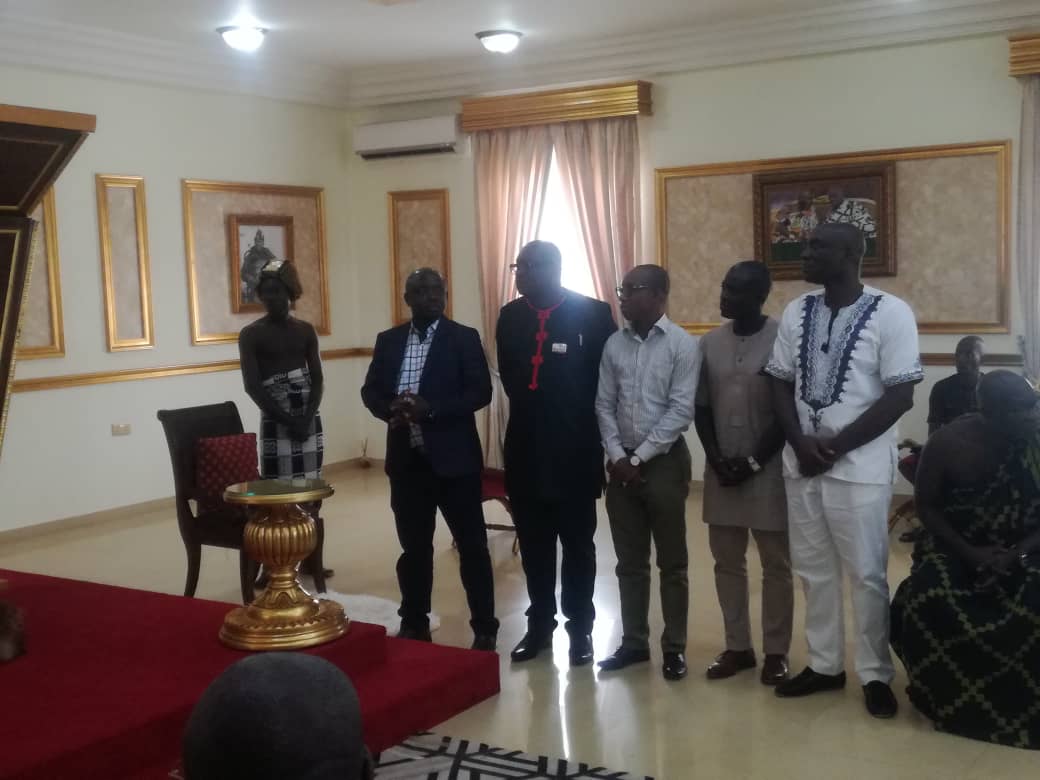
The rest are Frederick Adjei-Rudolph the Eastern Regional Manager of GTA, Nana Twumasi a representative of Okyeman Environmental Foundation and a member each from the Forestry Commission and CSIR.
Okyehene Osagyefo Amoatia Ofori Panin, the chief of the Akyem Abuakwa who inaugurated the board tasked them to make the tourist site one of the best in Africa.
“This new role is very difficult because you will be working to make Ghana a better country, people go onto boards and become very rich suddenly but this board is exceptional. This is an eco-friendly investment enterprise and if we manage it well it will become a treasure for Ghana which will end us great forex exchange.”
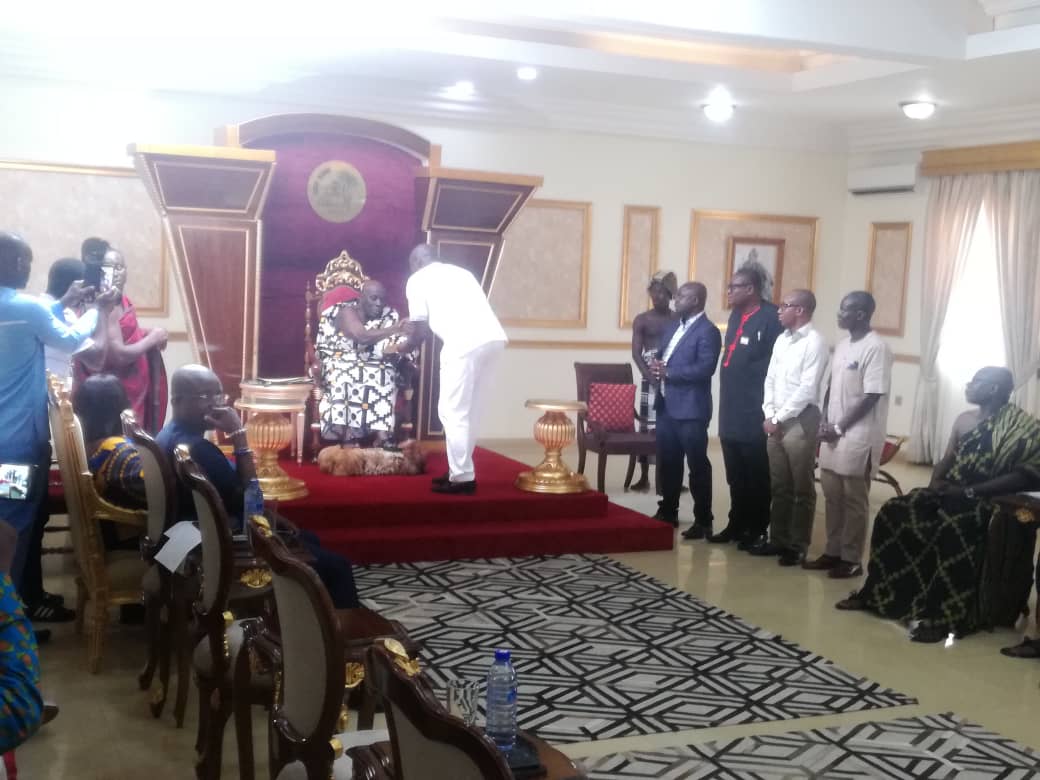
” Many well-to-do nations do not have natural resources and minerals but they have managed their tourist sites very well which has then become a major revenue generating point for them and I believe Bunso Arboretum has all the medicinal trees, plants and species and a calm environment to also become one of the best tourist attractions in the country and beyond so i urge you all to work very hard for us to achieve this dream”.
Speaking to Journalists after the inauguration, the Chief Executive Officer for the Ghana Tourism Authority Mr Akwasi Agyemang indicated the authority’s commitment to making Ghana a tourist destination.

“Ghana Tourism Authority is committed to making the country a tourist hub by harnessing every potential site so we have put together one of the finest architects and engineers to join the team which will be managing the affairs at Bunso Arboretum for us to get the best out of the place. This year we launched the Eat Ghana, Wear Ghana, See Ghana campaign all in the name of promoting Ghana, our President recently stated when he visited Tamale that we should not wait for foreigners to come to our country to tell us to visit our sites before we do so”.
“We have put plans in place to ensure the Bunso Arboretum provides Job for the youth in the area and improve economic activities in the area. We will add a playing ground to the site, hotels and resting places to facelift the site and work to ensure Bunso Arboretum becomes one of the best tourist destinations in the country.”
–
Source: citinewsroom.com
Year of Return: 2019 MMG Foundation Annual Homecoming Dinner and Dance launched
This year’s edition of the MMG Foundation Annual Homecoming Dinner and Dance has been launched and is scheduled to take place at the Accra International Conference Centre on August 17.
The 2019 event will also celebrate the 132 years of Marcus Garvey and the determination and resilience of historically unique Africans who have demonstrated Pan-African unity and spirit and have managed against all odds to make it home to motherland Africa, according to organisers.
At the launch of the event yesterday at the Accra Tourist Information Centre, various speakers, including Akwasi Agyeman, Coordinator of Year of Return and CEO of the Ghana Tourism Authority, stressed the need for Africans and diaspora to recognise the importance of our history in enslavement and take steps to ensure that modern-day slavery was completely done away with.
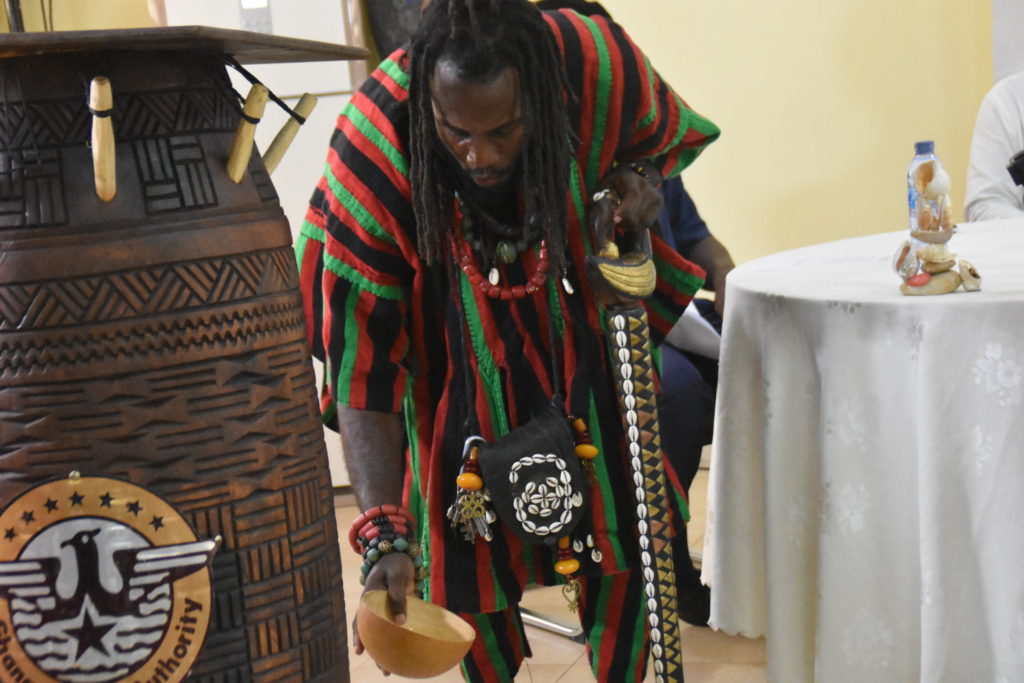
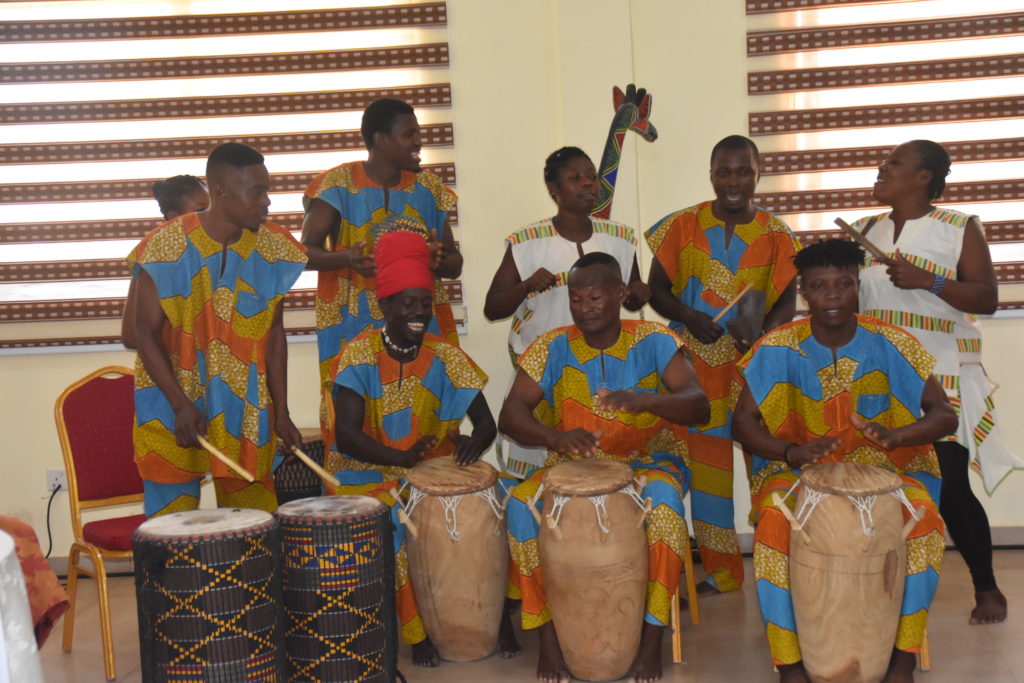
They said challenges that continue to confront the Black race all over the world, including, poverty, racism, injustice and all, constituted slavery, hence the need to come together and work to eliminate them. MMG Foundation Ghana, organisers of the homecoming and the dance, says the event will be one of their flagship events to raise funds for the building of the Marcus Garvey Memorial Centre in Ghana.
“The Marcus Garvey Memorial Centre, will be a multimillion-cedi facility, envisioned to be a globally relevant light house on the continent of Africa for the preservation of Garvey’s principles, philosophies and the advancement of Afrocentricity and African achievements across all endeavours .With the entire diaspora as a target market, when fully operating, it is expected to attract and generate a steady stream of activity that will attract international visitors for conferences, tours, seminars, workshops and more, all eventually contributing significantly to the local economy,” they said.
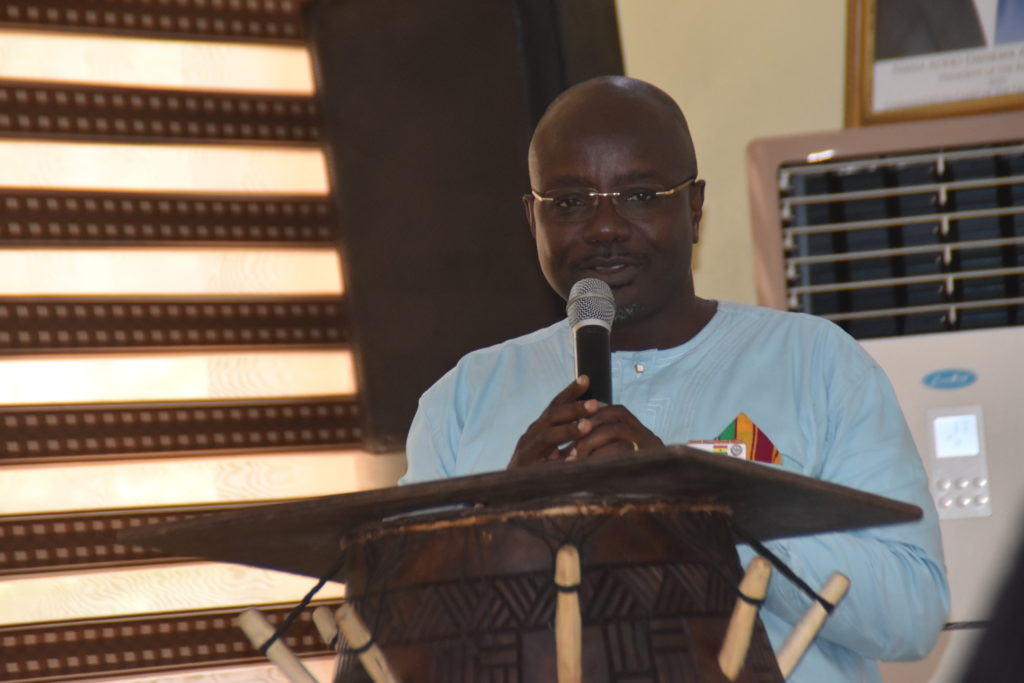
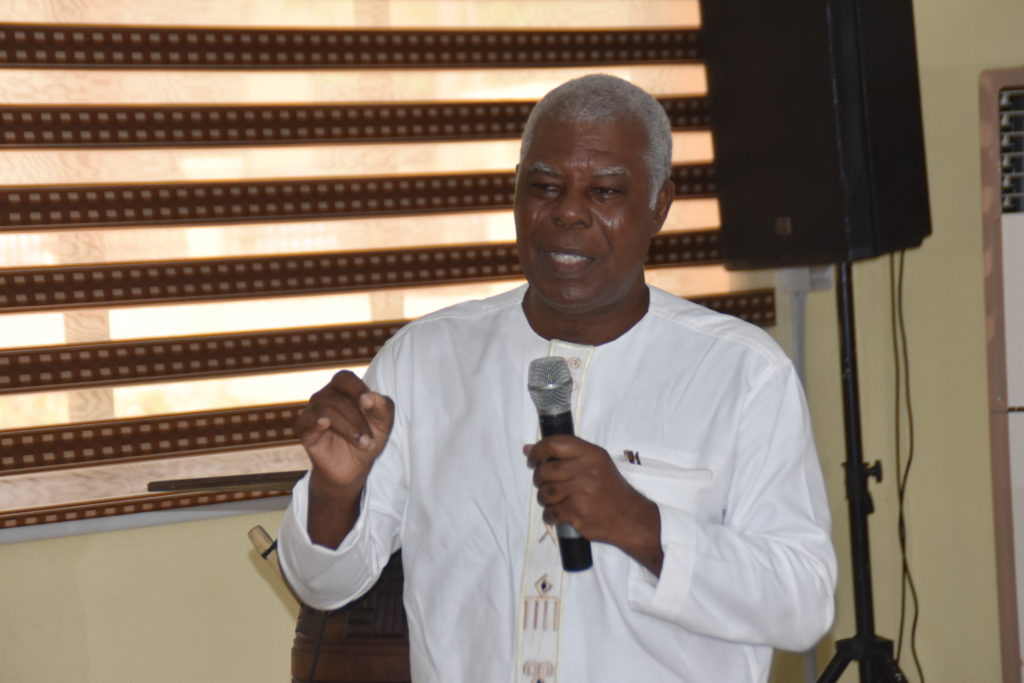
The MMG Foundation is a fraternal, Pan-African organisation aimed at propagating and publicising the philosophy & opinions of the Right Honourable Marcus Mosiah Garvey among the peoples of African Descent.
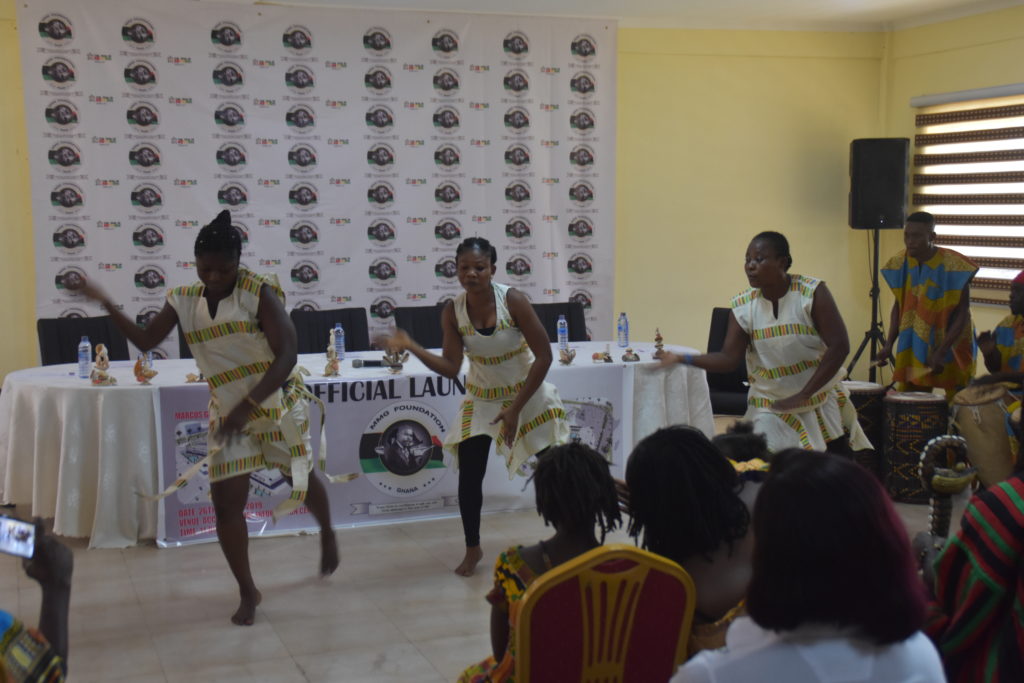
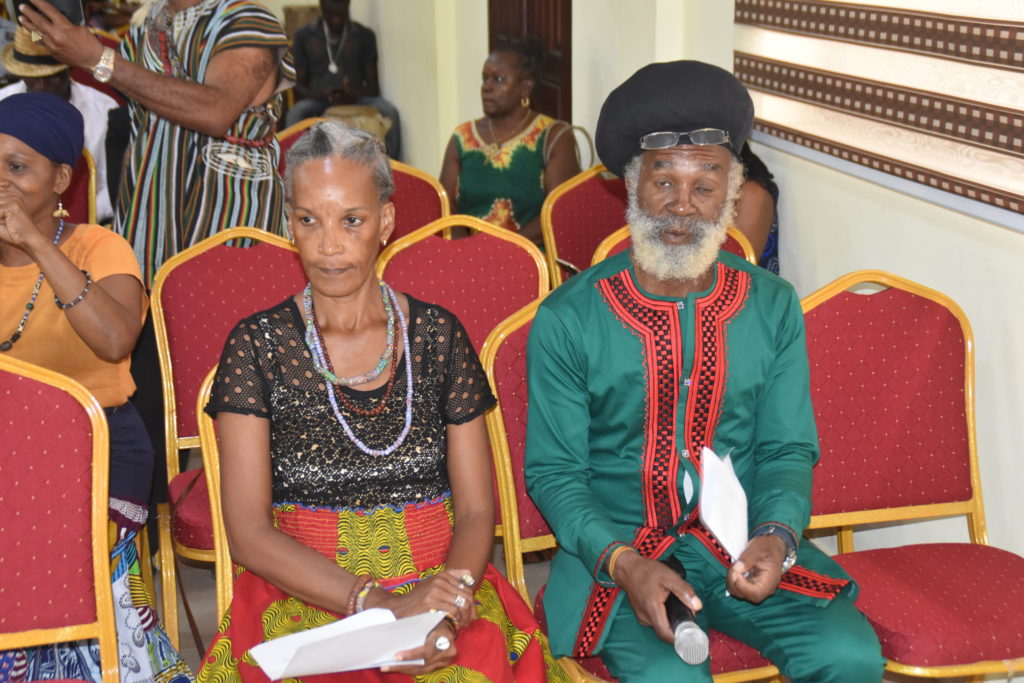
The organisation’s aim is to promote a sense of pride and love for and amongst the African nations. To provide leadership in helping Africans to acquire the skills and knowledge that are necessary for our advancement in the modern world.
Source: Voyages Afriq
Kojo Bentum-Williams gets UN World Tourism Organisation top job
The Managing Editor and CEO of VoyagesAfriq Media Limited, Mr Kojo Bentum-Williams, has been appointed as the UN World Tourism Organization‘s Senior Expert for Communications in Africa.
This appointment will see him lead communications of the Organisation’s activities and events in Africa.
This new appointment took effect in March 2019 and part of his core mandates is to grow the UNWTO’s ten-point agenda in Africa under the Zurab Pololikashvili-led administration.
He is also expected to coordinate with the Africa Department at UNWTO to reach out to members of the African media and hold clinics to further train and inform travel media on the continent.
Kojo is the founder and managing editor of VoyagesAfriq Media Limited, a pan African travel media company which publishes VoyagesAfriq Travel Magazine Quarterly and operates the online portal VoyagesAfriq.com.
He previously worked as the press secretary to Ghana’s former ministry of Tourism Culture and Creative Arts until 2014 and also worked a press officer at the Ghana Tourism Authority.
He has covered a wide range of global travel and tourism conferences and he is seen by many as one of the authorities in the affairs of the UN Tourism Agency.
ATCNews wishes Kojo the very best in his new appointment, a strategic move by the powers that be in Madrid to deepen the UN agency’s engagement with the African continent and vastly improve and advance their agenda for and communications with Africa.
Source: Myjoyonline
Year of Return: Youth In Tourism Festival Launched
The Tourism Society of Ghana (TOSOGHA) in partnership with the Ghana Tourism Authority and the Year of Return Steering Committee has today launched the Youth in Tourism Festival (YOTOFEST) at the Accra Tourist Information Centre.
The festival will among other things, allow for greater local participation, especially the youth in the year-long commemoration of the Year of Return, Ghana 2019. The Youth in Tourism Festival will include a series of activities comprising, a public lecture and workshop, float, exhibitions, musical jamboree and a tour over a three -day period from July 18 to 20.
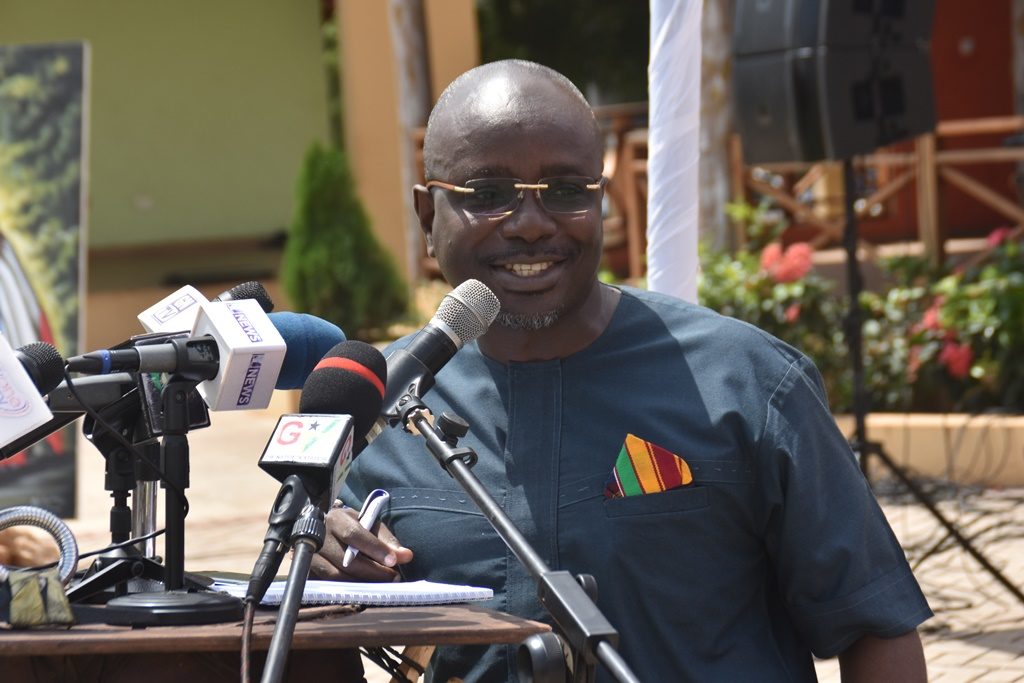
Coordinator of the Year of Return and CEO, Ghana Tourism Authority, Akwasi Agyeman at the launch, was full of praise for TOSOGHA for continuing to reorient the youth on the need to promote domestic tourism through their activities such as the establishment of tourism clubs in both second cycle and tertiary institutions all over the country.
He mentioned that domestic tourism was at the heart of the country’s tourism growth and TOSOGHA remains a key partner to further complementing the efforts of the Authority and other institutions to better strengthen the domestic tourism drive. Agyeman reiterated his outfit’s continuous support for the organization and the Youth in Tourism Festival.
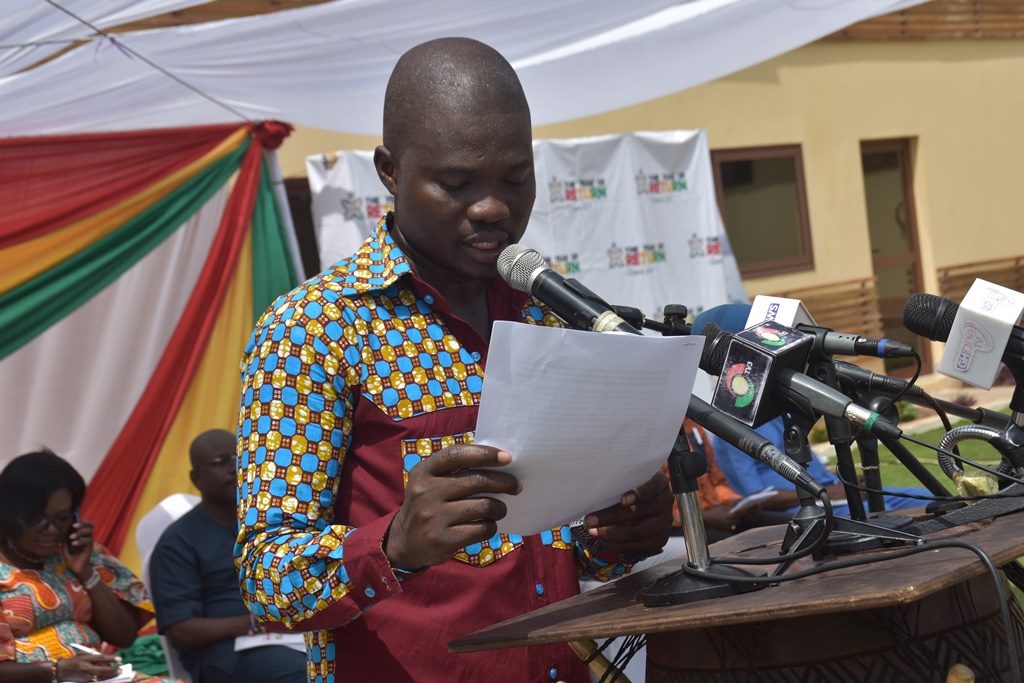
On his part, Youth Tourism Ambassador and Executive Director of TOSOGHA, Joseph Amartey envisages the Festival to be a potential social platform that effectively and efficiently market Ghanaian indigenous culture and heritage values for international patronage through broader youth engagements. “The foremost objective of YOTOFEST is to re – establish the smooth as well as swift patronage of domestic tourism from a more holistic and grassroots approach,” he said.
An important feature of the festival, according to Amartey, “is the creation of ready market for local artifacts and promotion of commercial sale of ‘’made in Ghana ‘’ goods and services internally and for export, hence a platform to promote the See, Eat, Wear, Feel Ghana agenda.”
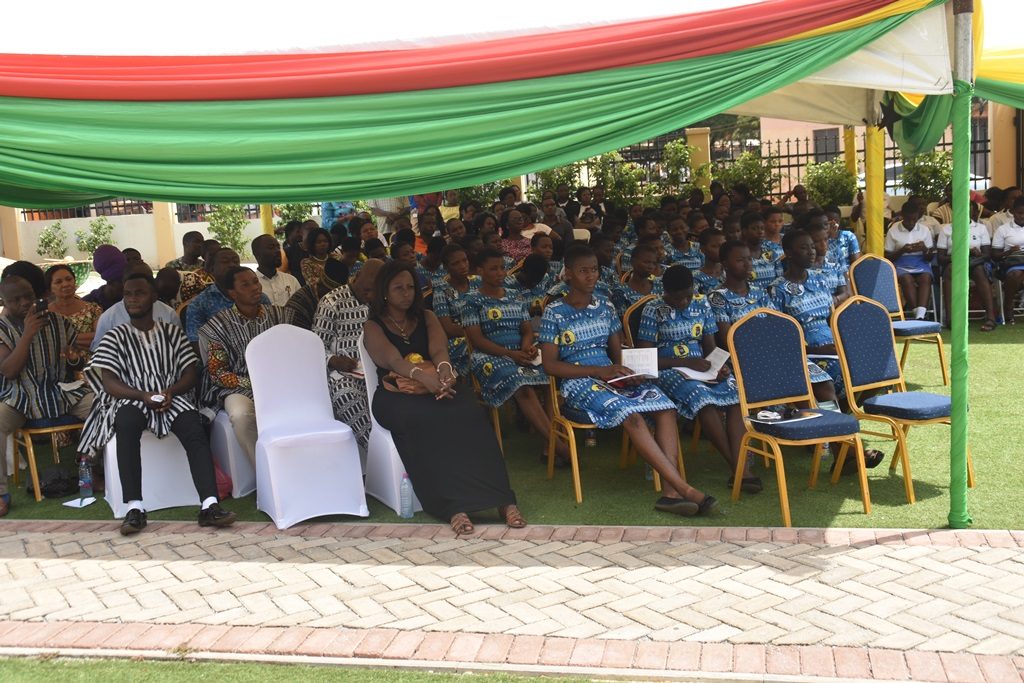
The launch of the event attracted student membership of TOSOGHA from various institutions within the Greater Accra Region with other high profile persons also in attendance. They included; Akwasi Ababio, Director for Diaspora Affairs at the Presidency and Chairman of the Year of Return Steering Committee, Kwadwo Antwi, CEO, Ghana Tourism Development Company, Bella Ahu, President, Ghana Tourism Federation and Olivia Opoku-Adomah, Director of Research, Statistics and Policy at the Ministry of Tourism, Arts and Culture who represented the Deputy Minister.
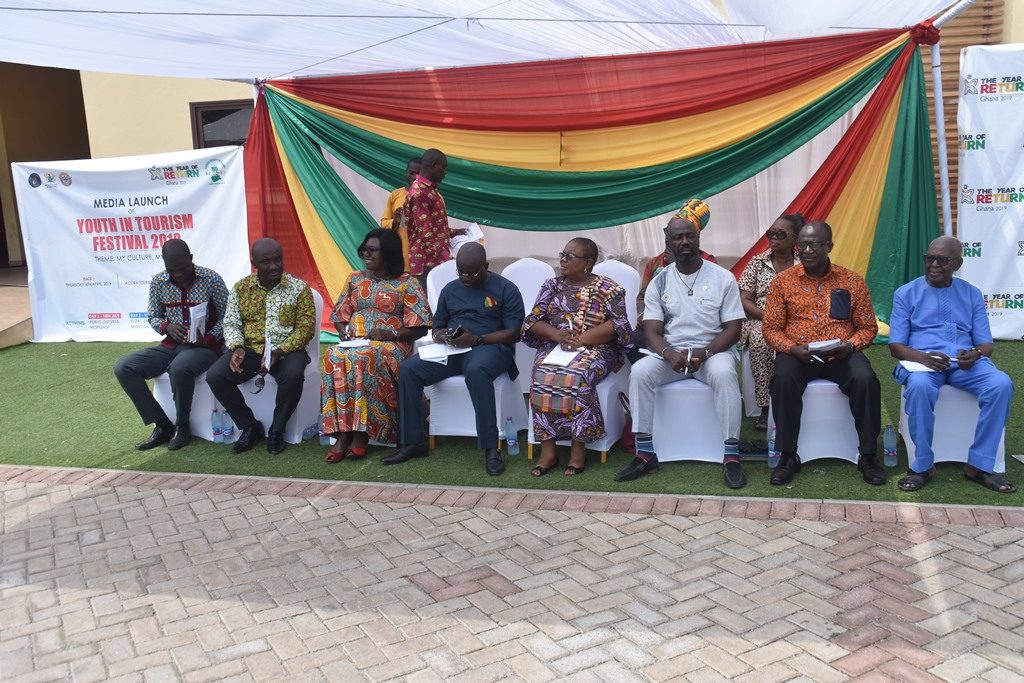
The Tourism Society of Ghana is a youth-led organization with the objective of promoting domestic tourism and imbibing tourism culture among the youth and has over 30,000 members in secondary and tertiary schools across the country.
Click here to view more photos from the launch
Story by: Samuel Obeng Appah
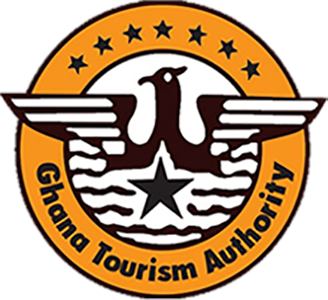

 Call Center
Call Center
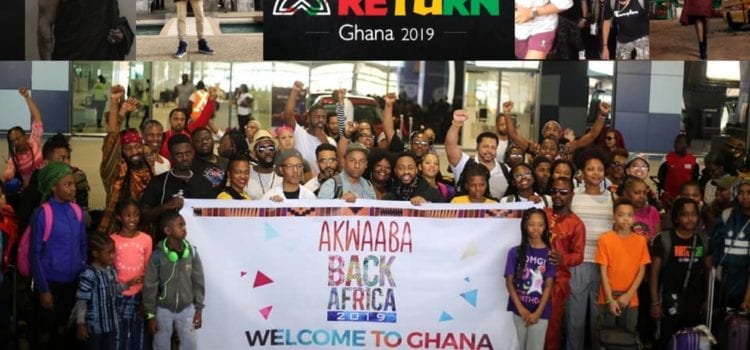
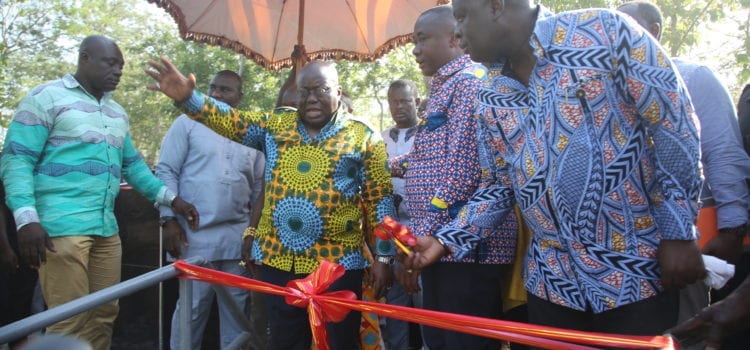
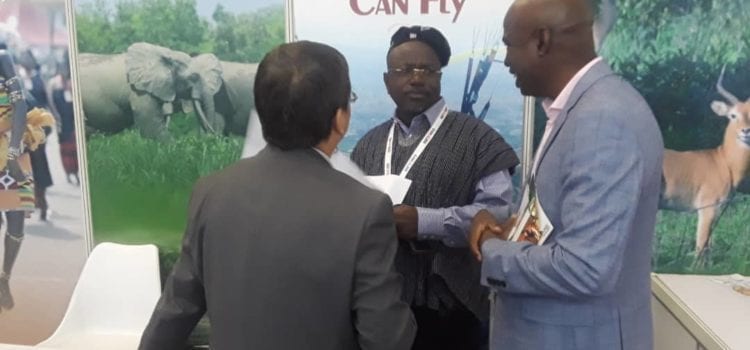
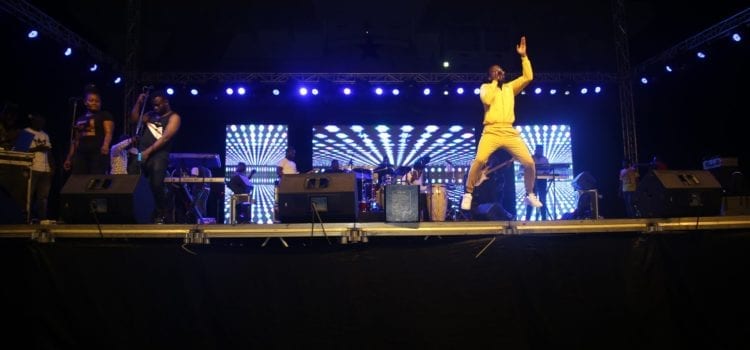
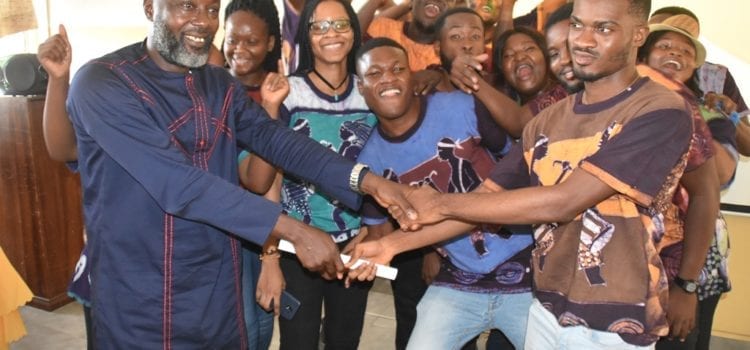
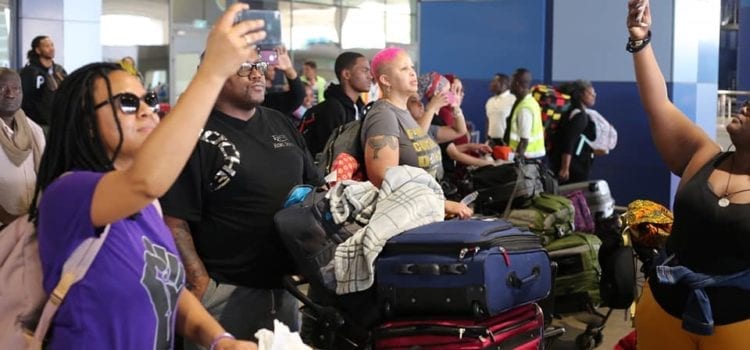

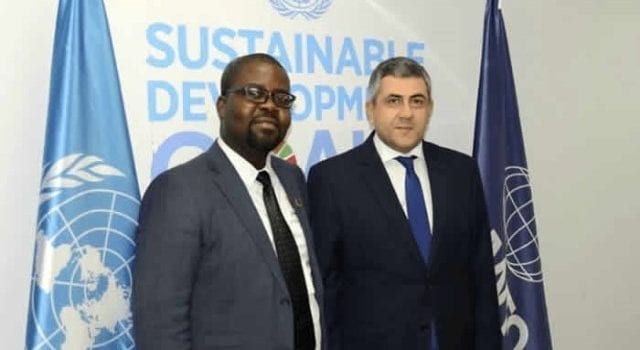
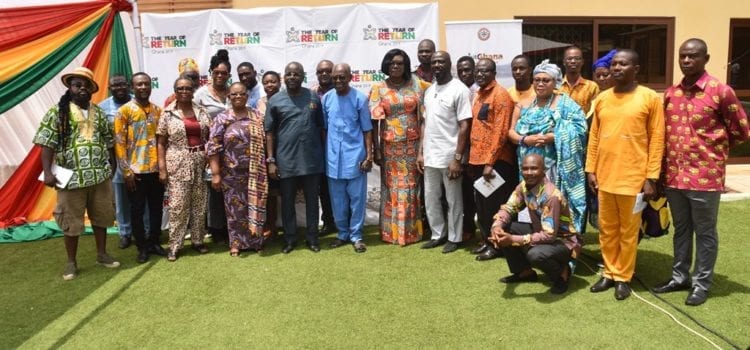
 Call Center: 0307007100
Call Center: 0307007100